So I had been thinking about alternatives to commercially manufactured foot ware for a while. Something easy and made from either stuff lying around or an abundant resource. I’m still kicking around the idea of a tire shoe/ sandal. Inspiration struck when I was watching a Japanese show (anime) called Bleach. The main character wore a pair or sandals that looked like they were made from woven rope. I researched it and indeed they are real. They are known as Waraji 草鞋 and are made from straw rope and were the traditional footwear for the common people of Japan as well as the samurai and foot soldiers. So I was thinking if it’s woven rope I’ll try to make a waraji from paracord. Let me show you how.
I did a search online to see if anyone else had ever made a sandal from paracord. All I could find was straps made from paracord. So I found some instructions on making Waraji from traditional materials and hopped it would adapt well. The most helpful resource was this video series on YouTube. She mentions the Instructable where she got the idea. They were helpful but lacking in details at certain points. But I’m big on doing and learning from my mistakes than suffer from analysis paralysis. So lets jump in!
First we have to gather our supplies. You need a wood board big enough for your foot with plenty of room behind your heel. A marker to trace your foot onto the board. Scissors to cut the ropes. Sisal rope and paracord. Lastly you will need nails. I thought for sure that a fifty foot hank of paracord would do the job. Wrong it took a bit over. Maybe seventy feet per sandal. So you would be carrying around 150 feet of cordage on your feet. Better than just shoe laces.
So the first step is to trace your foot. Not much to explain here just make sure that you stay on the outside of the arch.
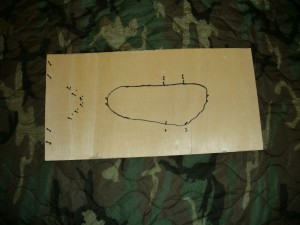 Once you have you foot traced it’s time to add your nails as guides that form your loom. The video and Instructable show the exact locations where to put in your nails. I had my loops too near the toes on this one.The nails in the very back are for support to keep the sisal rope under tension.
Once you have you foot traced it’s time to add your nails as guides that form your loom. The video and Instructable show the exact locations where to put in your nails. I had my loops too near the toes on this one.The nails in the very back are for support to keep the sisal rope under tension.
This is the sisal rope attached to the board. Then ends are ties around the back of the board.
At this point I completely forgot to take pictures of the long and tedious weaving process. I think It took me about two maybe three hours, off and on, to finish the one sandal.
This is the finished Paracord Waraji. I could definitely tell that by the end I had gotten better at the weaving and the weave on the back is much tighter.
I learned a lot from this experiment. I have a few ideas on improvements for the next ones I make. So I can get this to a finished design and call it a success. But as a proof of concept I have to saw you can make a sandal from paracord. So stock up on even more paracord to make paracord waraji during the apocalypse or just to be tacticool at the beach this summer.
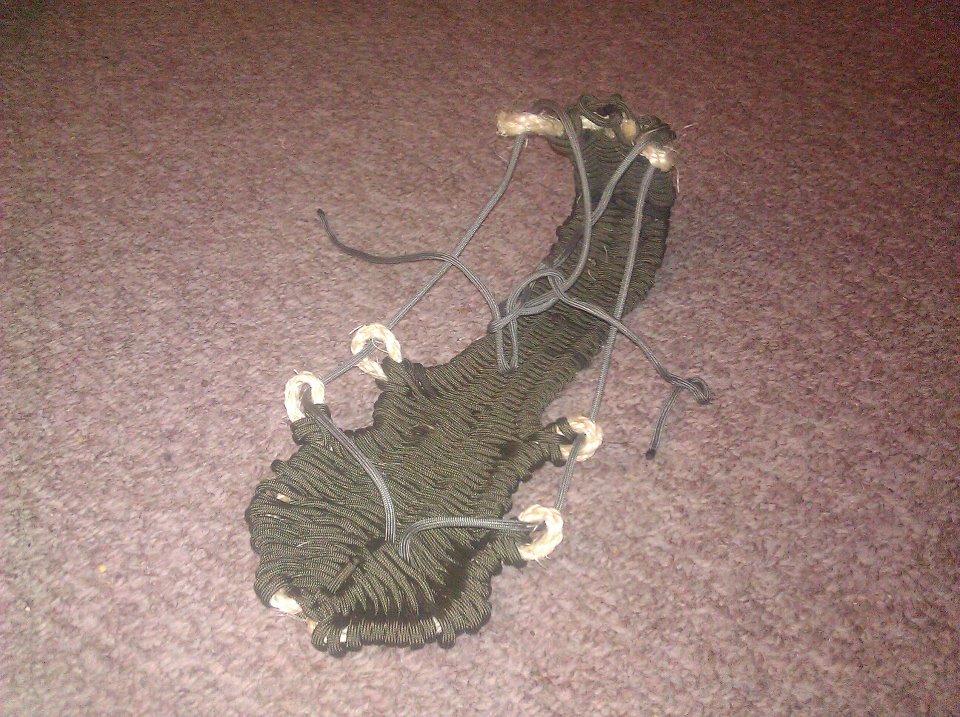
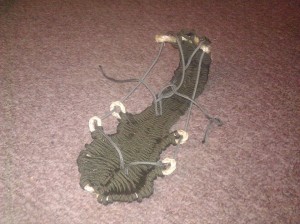
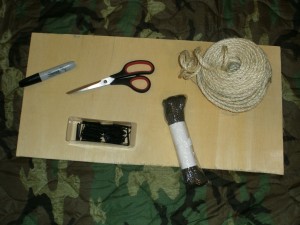
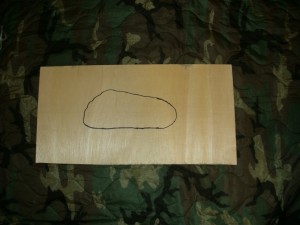
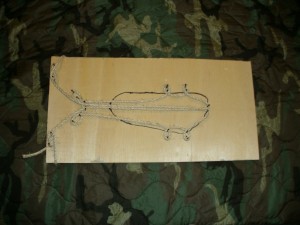
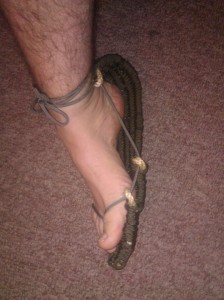
Awesome! Cody Lundin is a great instructor, but that whole 100% barefoot thing is a bit much…and I grew up barefoot in WV! Nice to now have a meme regarding footwear from cordage…
I respect Cody a ton and own both his books. I even think posture wise we would be better barefoot. But my feet are too tender and I need some protection
I like the way it fit .
I would love to buy a pair of 550 type 3 para cord sandals . If anyone can make me a pair please let me know & thanks alot . Chris
I love watching cody on TV with his survival tips & if i find his books i will buy them for sure , i am a survivalist & use every tip that i get always & Cody has taught me alot of tips for sure . Thanks alot Cody Lundene
check out espadrille making. it’s the original rope sandal and might give you some technique ideas.